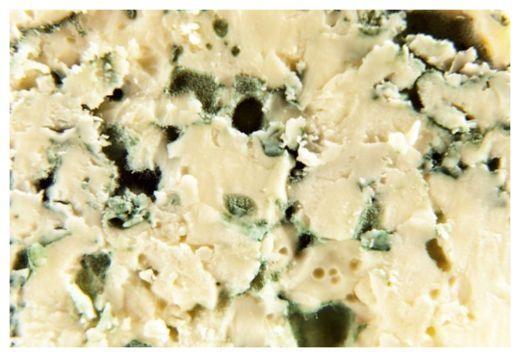
© Thinkstock
Some cheeses are best when they are aged for five or ten years, but any cheese that you eat today would be considered under-ripe if you base it against a cheese recently discovered in China.
Researchers from Germany's Max Planck Institute of Molecular Cell Biology and Genetics (
MPI-CBG) have found what is being called the world's oldest cheese after discovering yellowish clumps on the necks and chests of Chinese mummies dating back to around 1615 BC.
An analysis of the clumps revealed that they are a lactose-free variety of cheese that was made quickly and conveniently.
Furthermore, the researchers believe the manufacturing process may have "played a role in the spread of herding and dairying across Asia," reports Traci Watson of
USA Today."We not only identified the product as the earliest known cheese, but we also have direct ... evidence of ancient technology," said study author Andrej Shevchenko, an analytical chemist at MPI-CBG.
Shevchenko said the cheese, as were the mummies, remained well-preserved for so long due not only to the burial practices, but the region. The conditions at Small River Cemetery Number 5 in northwestern China's Taklamakan Desert, which was first documented in the 1930s, were perfect for preserving the dead.
The Bronze Age people of the area seemingly buried their dead atop a large sand dune near a now-dry river, interring their kin under what looks like large wooden boats. The researcher noted that these mummies seemed as if they were "vacuum-packed" because of the burial process, which included wrapping the boats tightly with cowhide.
The dry desert air and salty soil prevented the decay of both the dead and the cheese that was sprinkled atop the corpses. The remains and their artifacts were freeze-dried, preserving everything from their light-brown hair to the leather boots and wool capes they adorned. Analysis of seeds and animal tissues in the tombs indicate that the burials date to between 1450 and 1650 BC.
An analysis of the proteins and fats in the clumps confirmed they were cheese and not butter or milk. While it remains unclear why the dead were buried with cheese on their bodies, Shevchenko said it may have been "food for the afterlife."
The analysis also showed that the cheese was made by combining milk, bacteria and yeast. The technique employed by these ancient people is still used today to make the beverage kefir, as well as kefir cheese, which is similar to cottage cheese.
If the people of this time did in fact use the kefir starter kit to make their cheese, it goes against any conventional thinking on how cheese has always been processed. Most cheeses today are made with rennet, a curdling substance found in the guts of calf, lamb and kid. The common belief is that cheese was invented by accident when humans first began carrying milk in bags made from animal gut.
Using rennet requires the killing of young animals, whereas kefir does not, noted Shevchenko. By using the kefir starter kit, the people of the time had an easy and low cost method of producing cheese, which would have helped drive its spread throughout Asia and into the Middle East.
While this is the oldest known cheese yet discovered, previous research in Poland has uncovered cheese-making strainers dating back more than 7,000 years, noted
Oliver Craig, a bioarchaeologist at the University of York. He maintains, though, that Shevchenko undoubtedly has good evidence for what me be the oldest cheese known.
However, it may be harder to prove that the cheese was made with kefir starter rather than rennet. He told USA Today that the proteins may have decayed so much that providing a definitive answer is unlikely. He feels that an analysis of animal bones or pottery is needed to confirm that this cheese was behind the technological drive across Asia.
The new findings are to be published in a paper in an upcoming issue of the
Journal of Archaeological Science.
Reader Comments
to our Newsletter